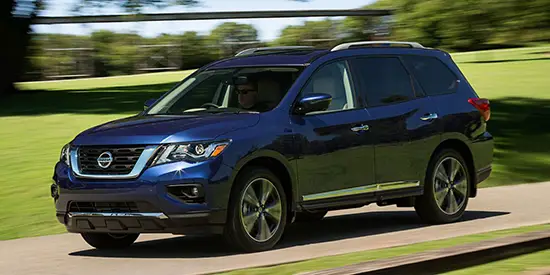Optical zoom capabilities in compact cameras present a compelling feature for those passionate about photography, allowing for detailed captures from a distance without compromising image quality.
This discussion aims to shed light on how such technology enhances the photographic experience, offering insights into sensor sizes, portability, advanced features, and the balance between price and performance.
By focusing on these aspects, we aim to provide a comprehensive understanding of what makes compact zoom cameras a preferred choice for various photography needs.
Optical Zoom Capabilities
Optical zoom in compact cameras allows users to get closer to their subjects without moving, thanks to the physical movement of the lens elements. This feature shifts the light path before it hits the camera sensor, magnifying the view without losing quality. Unlike digital zoom, which simply crops and enlarges the image resulting in pixelated photos, optical zoom maintains the clarity and detail of the image, making it invaluable for shooting detailed landscapes or capturing distant subjects like wildlife.
Compact cameras with optical zoom are a boon for travelers and photography enthusiasts who don’t want to carry heavy equipment. They pack this versatile feature into a pocket-size gadget, proving that big things come in small packages. You can go from capturing a wide frame to zooming in on a specific detail effortlessly, providing flexibility that rivals that of a camera with interchangeable lenses, without the associated weight or complexity.
The magic begins with a twist of the zoom ring or a press of a button, triggering the lens elements to dance in harmony. This mechanism is akin to viewing through a telescope, where you’re not just cropping closer details but actually drawing distant scenes nearer optically. It’s an intricate ballet of glass and light that brings distant vistas into sharp relief, crystallizing moments that the naked eye might miss.
Optical zoom contributes to creativity and exploration in photography by empowering photographers to experiment with composition and perspective without degradation of image quality. Whether it’s the subtle expression on a distant face or the intricate patterns on a butterfly’s wings, the detail retained is astounding. This capability encourages photographers to play with framing and focus, pushing the boundaries of their artistry.
In professional settings where quality can’t be compromised, compact cameras with substantial optical zoom capabilities offer a discreet yet powerful tool for capturing high-quality images. From journalistic endeavors capturing runway details from the back of a room to wildlife photographers documenting skittish animals, optical zoom enables shooting scenarios that were once difficult or impossible with bulkier systems.
The integration of optical zoom in compact cameras signifies a commitment to bringing professional-grade capabilities to everyday users. It democratizes photography, allowing anyone to capture stunning, zoomed-in shots with a device that slides easily into a pocket. Gone are the days when achieving such feats required heavy, expensive lenses mounted on DSLR cameras.
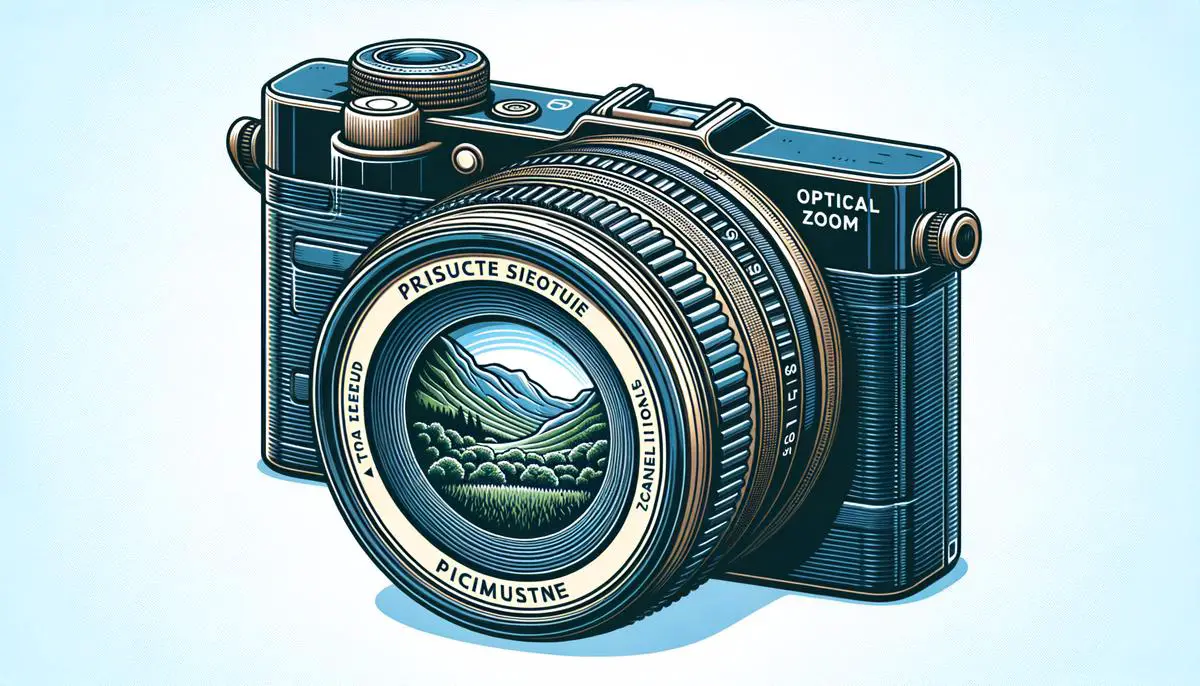
Sensor Size and Image Quality
When we talk about sensor size in compact cameras, think of it as the heart of your device, determining how well your camera will perform, especially in challenging lighting situations. A larger sensor captures more light, crucial for reducing noise in your photos and improving overall image quality. This means your nighttime cityscapes or indoor birthday party shots come out cleaner, with more details visible in the shadows and highlights.
As sensors get bigger, you also gain the advantage of achieving that attractive background blur, known as ‘bokeh’, giving your images a more professional look. However, as sensor size increases, so does the camera’s bulk and price. And here’s where things get a bit tricky with optical zoom.
With a powerful optical zoom, you can bring distant subjects into clear view, capturing details you couldn’t with the naked eye. But achieving significant zoom levels in a camera with a larger sensor requires larger lenses, which can defeat the purpose of having a compact camera in the first place.
Manufacturers have tackled this challenge by finding a sweet spot, combining decent sensor sizes with optical zoom capabilities. Cameras with 1-inch sensors have become incredibly popular in this respect. They offer a good balance, providing better image quality than their smaller-sensored counterparts without being too bulky or expensive. You can easily find compact cameras with 1-inch sensors that offer 10x optical zoom or more, which is quite impressive.1
However, the physics of light and optics means there’s always a tradeoff. In lower light conditions, even a compact camera with a 1-inch sensor and a powerful zoom might struggle compared to a camera with a larger sensor and less zoom. The key reason is that zoom lenses with larger maximum apertures (which allow more light to hit the sensor) are harder and costlier to manufacture, especially if you also want the camera to remain pocketable.
This means photographers need to consider what’s more important for their shooting style and subject matter. If you prioritize versatility and need to zoom in on distant subjects often, then a camera with a 1-inch sensor and a nice optical zoom range might be your best bet. But if working in low light without a flash is more your thing, and you can get closer to your subjects, opting for a compact camera with a larger sensor and less zoom could yield better results.
Whether you’re capturing the faint smile of a saxophonist lit by a single spotlight in a jazz club or zooming in on a climber conquering a distant peak, understanding the interplay between sensor size and optical zoom can help you choose the right compact camera for your needs, ensuring you don’t miss those magical moments you want to preserve.
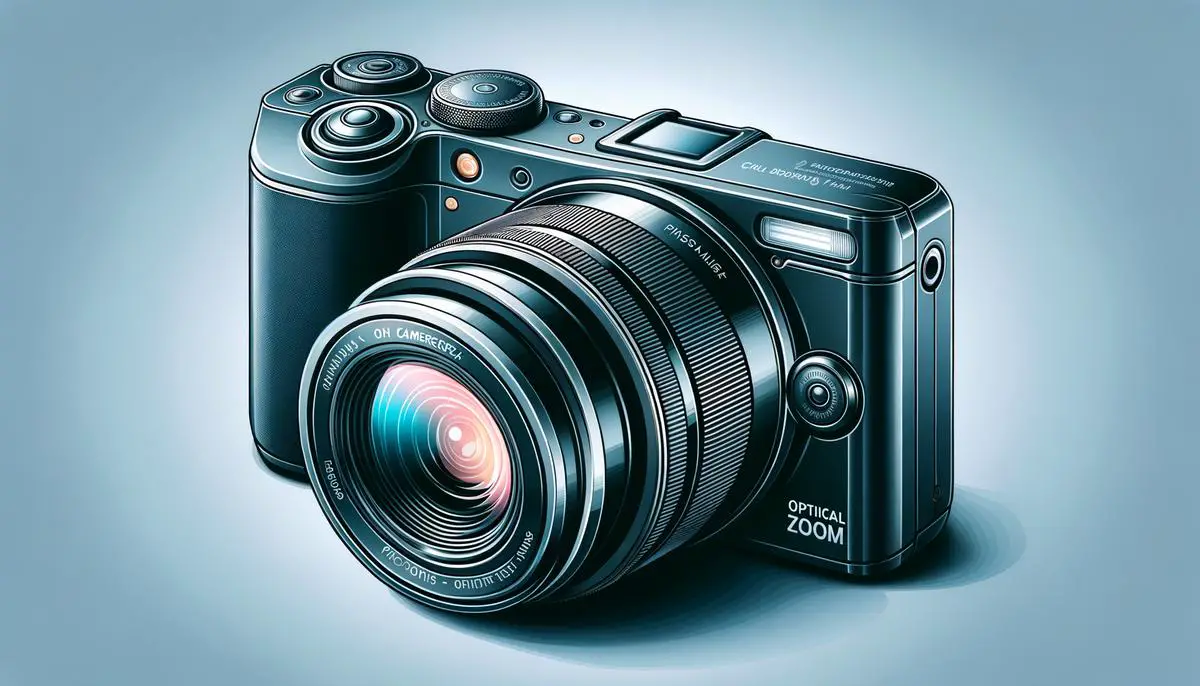
Portability and Design
Compact zoom cameras blend the convenience of portability with the nuanced control typically reserved for their bulkier DSLR cousins, drawing a fine line between compact size and functional usability. The design features crucial for achieving this balance include the physical dimensions, weight management, and ergonomic layout, with each element playing a pivotal role in enhancing the photographers’ shooting experience across diverse scenarios.
Manufacturers are keen on keeping the body as slim as possible while packing it full of the latest technology. It’s a tightrope walk of engineering marvel that results in a device small enough to slip into a coat pocket but powerful enough to snap stunning, zoomed-in photos from afar. This slim profile is invaluable for casual outings, travel photography, or instances when lugging around a hefty camera bag isn’t plausible.
These cameras are remarkably lightweight, thanks to advances in material science. Makers often utilize high-grade plastics or composite materials that don’t just shed pounds from the camera’s total weight but also stand up to the rigors of frequent use. The lighter the camera, the easier it is to carry for extended periods—ideal for those long days exploring a new city’s streets or hiking trails in pursuit of the perfect shot.
The magic truly comes alive when discussing ergonomics. Designers mold the camera body to fit snugly into the photographer’s hand, with each button, dial, and switch positioned for quick, intuitive access. This deliberate placement is paramount in situations requiring rapid adjustments to capture fleeting moments. An ergonomic grip reduces hand fatigue, making those all-day photography sessions less of a strain.
The incorporation of retractable zoom lenses on compact cameras revolutionizes their usability. These lenses recede entirely into the camera body when not in use, preserving the camera’s slim profile. Deploying advanced mechanics, this design feature ensures that, when extended, the lens neither compromises the camera’s balance nor its portability. Hence, photographers can enjoy significant optical zoom capabilities without a protruding lens permanently altering the camera’s dimensions.
Compact cameras often boast a tilting or fully articulating LCD screen, adding another layer of versatility to their design. These screens facilitate shooting from unique angles—whether that’s hoisting the camera high above a crowd or getting down low for an interesting perspective—without the guesswork of blind shooting. A tilting screen allows for creative framing and can make a world of difference in avoiding reflections or glare under bright sunlight.
Another subtle yet impactful design aspect is the texture added to camera bodies and grips. This texture enhances grip security—a critical feature when shooting one-handed or in challenging conditions, like near waterfalls or during windy hilltop ventures. It instills confidence among photographers, knowing their prized possession won’t easily slip from their grasp.
Despite their compact form, these cameras don’t skimp on external control options. While space is at a premium, strategically positioned dials and customizable buttons offer direct access to key settings like aperture, shutter speed, and ISO, mitigating the need to dive into on-screen menus. Efficient physical controls are a boon for photographers wanting to remain alert and ready, proving that small cameras can indeed pack a punch rivaling their larger counterparts.
The design features focusing on physical construction, weight optimization, and ergonomics transform compact zoom cameras into portable powerhouses. They democratize high-quality photography by merging sleekness with functionality, ensuring that top-notch creativity is always within arm’s reach for enthusiasts and professionals alike.
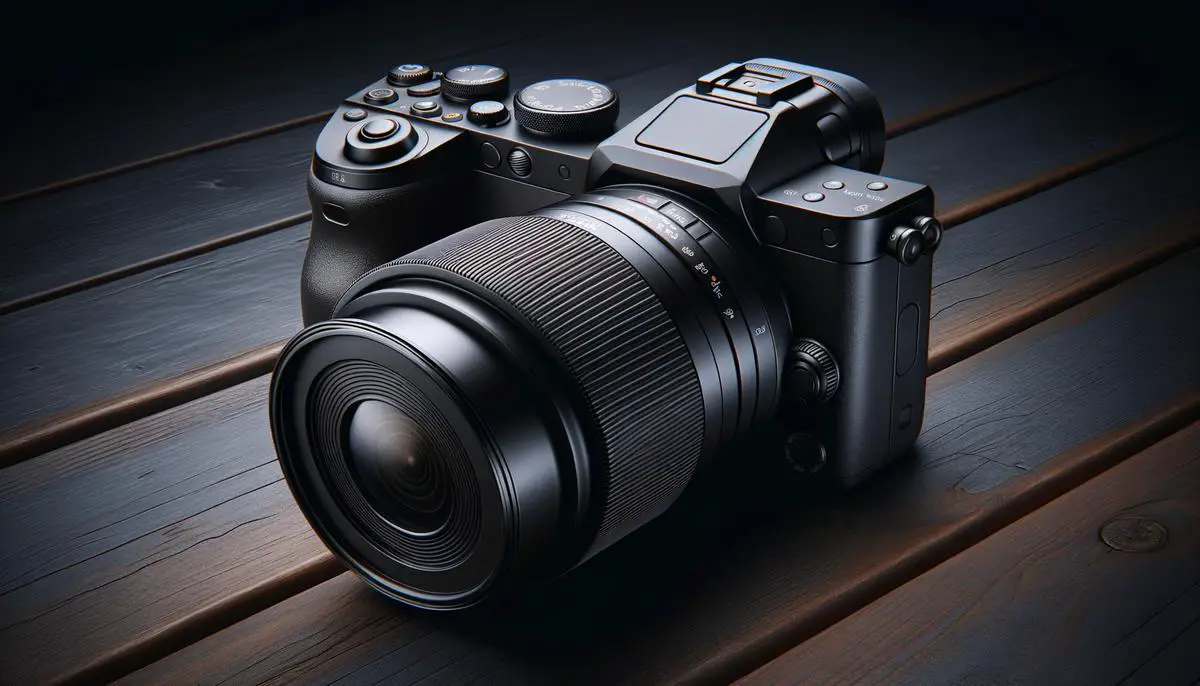
Advanced Features and Connectivity
Modern compact zoom cameras now come loaded with Wi-Fi and Bluetooth connectivity, making the sharing of images and remote camera control a breeze. With these wireless options, photographers can easily transfer their photos to smartphones or tablet devices, enabling instant sharing on social media platforms or cloud storage without the hassle of cables or removing memory cards.
Many compact cameras offer powerful image stabilization systems. These systems work to counteract hand shake or motion blur, ensuring sharp images even at full zoom or in low-light conditions. Whether it’s optical, sensor-shift, or a combination of both, image stabilization is a game-changer for capturing clear, detailed photos without a tripod.
The 4K video capability is another standout feature in the lineup of modern compact zoom cameras. This allows users to record stunning, high-resolution video footage, making these cameras incredibly versatile for both photography and videography enthusiasts. The sharpness and detail of 4K video bring your memories to life with cinematic quality, opening up new creative opportunities for storytelling.
The inclusion of manual controls in compact zoom cameras offers users the flexibility to adjust settings like shutter speed, aperture, and ISO manually. This feature is particularly appealing to advanced photographers who demand greater creative control over their images. It allows for fine-tuning and experimentation, pushing the boundaries of what’s possible with a compact camera.
These advanced features transform compact zoom cameras into powerful tools for photography enthusiasts. The combination of Wi-Fi/Bluetooth connectivity, image stabilization, 4K video capabilities, and manual controls not only enhance the shooting experience but also expand the possibilities for image creation and sharing. Compact yet mighty, these cameras offer a compelling mix of portability and performance that appeals to a wide range of photographers, from casual shooters to seasoned professionals looking for a lightweight alternative to their larger gear.
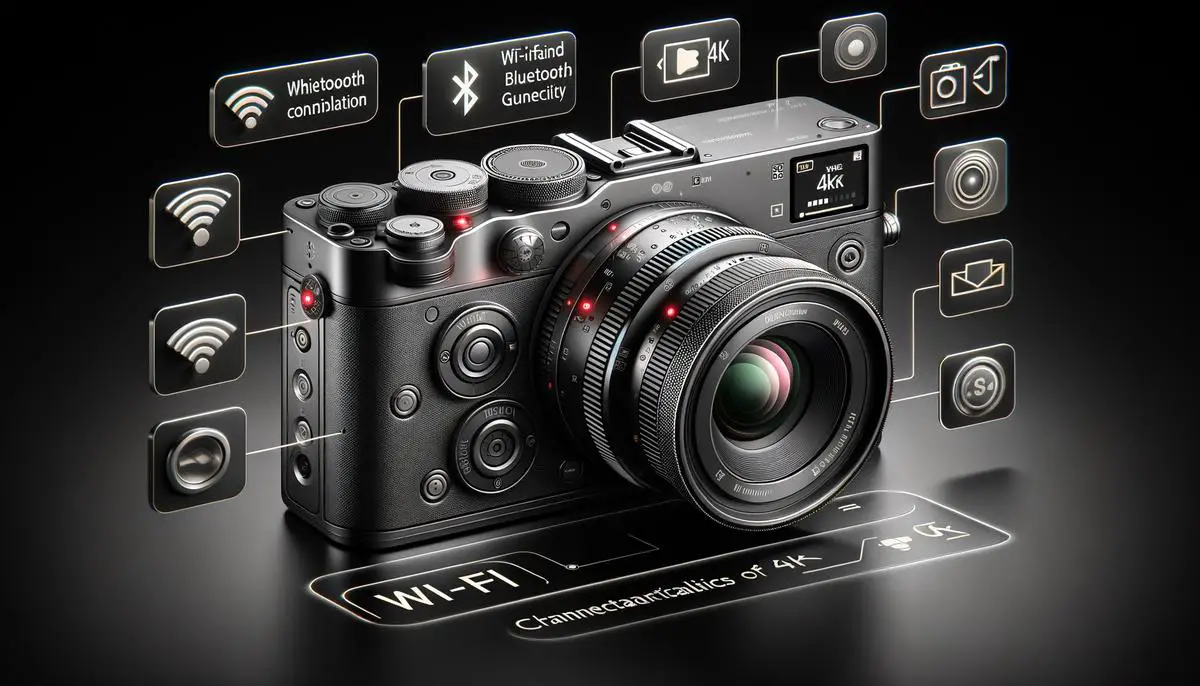
Price vs. Performance
When diving into the world of compact zoom cameras, the price significantly impacts what features and performance you can expect. As prices drop, so do some high-end features, but that doesn’t always mean a sacrifice in value. Cameras at the lower end of the price spectrum may lack the larger sensors or advanced manual controls found in their pricier counterparts. However, they often make up for it with impressive zoom capabilities and user-friendly designs that appeal to casual photographers and those new to the craft.
In the economy segment, cameras utilize smaller sensors, which helps keep costs down. These models typically offer substantial optical zoom in compact bodies, making them ideal for capturing far-off subjects like wildlife or details in architectural and landscape photography. Although these smaller sensors can struggle in low light and may not offer as much detail as larger ones, advancements in technology have significantly improved their performance, yielding surprisingly good image quality for the price.
Mid-range compact zoom cameras present a balance, incorporating features desired by enthusiasts without reaching professional price tags. Here, you might find models with 1-inch sensors, offering a noticeable step up in image quality, especially in challenging lighting conditions. These cameras might also offer more creative control through manual settings, allowing seasoned photographers to fine-tune their shots. Robust image stabilization and faster lenses become more common, making these cameras versatile for a broader range of shooting conditions.
High-end compact zoom cameras push the boundaries of what’s possible in a pocket-sized design. These often come equipped with the largest sensors available in the category, along with lenses boasting wide apertures across their zoom range. Such features ensure stellar performance even in low light, maintaining quality throughout the zoom range. Advanced image processors support features like raw image capture, high-speed continuous shooting, and 4K video recording, catering to professional needs and ensuring these cameras can handle just about anything thrown at them.
Connectivity is another area where price influences features. While most compact cameras now offer some form of Wi-Fi or Bluetooth for easy sharing and remote control, higher-priced models tend to have more refined systems. They may offer seamless integration with mobile devices for instant transfers or even remote shooting capabilities, making them more versatile for content creators who need to quickly share their work.
Image stabilization is pivotal for getting sharp images, especially when shooting at longer focal lengths offered by the zoom. Lower-priced models might rely on less advanced digital stabilization methods, while pricier options provide optical or even 5-axis image stabilization systems that significantly reduce camera shake. This feature alone can make a notable difference in image clarity and overall camera performance, making it a critical consideration tied closely to price.
The leap to 4K video capability is often found as you climb the price ladder. While not essential for everyone, videographers—or those looking to future-proof their purchase—will find 4K video increasingly common in mid to high-range compact zoom cameras. Alongside this, higher-end models often support advanced video features like slow-motion recording, log profiles for better color grading, and external mic inputs, highlighting the diverse roles these cameras can fulfill.
The price range of compact zoom cameras directly influences the quality of features and performance photographers can expect. From the budget-friendly models suited for casual shoots and travel snaps to high-end versions tailored for professional use, there’s a camera out there for every need and budget. Careful consideration of what features matter most to your photography will guide you to the best value within your chosen price bracket, ensuring you get a camera that not only fits your budget but elevates your photography journey.
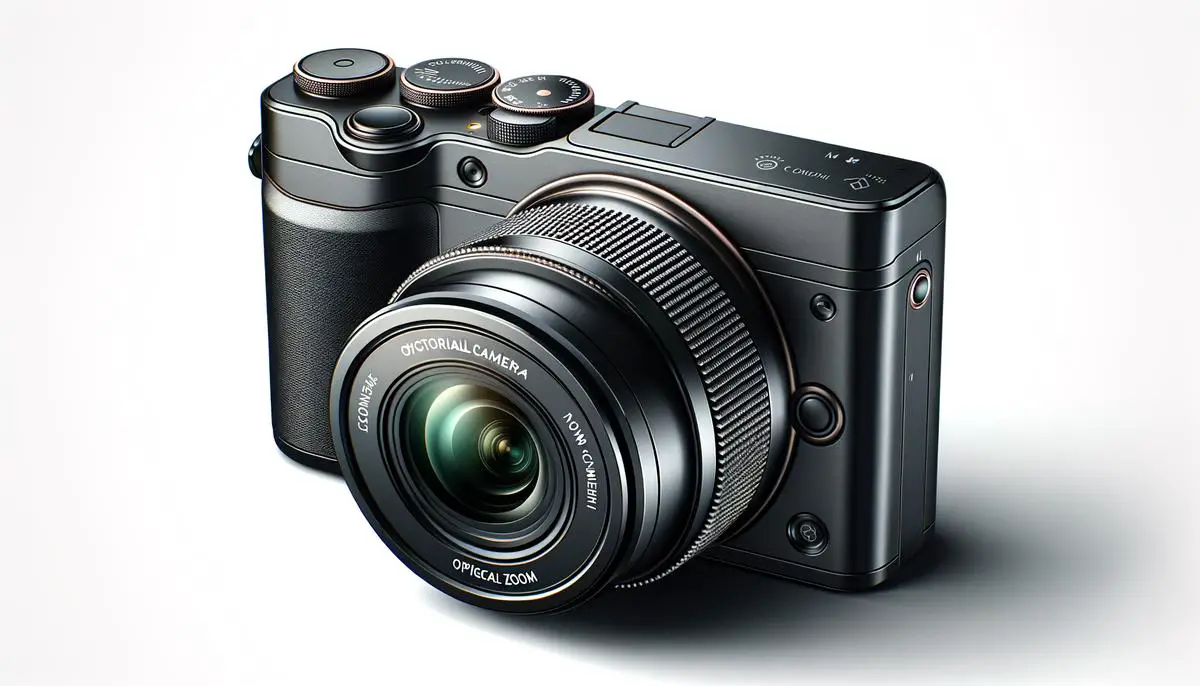
In conclusion, the essence of compact zoom cameras lies in their ability to bring distant subjects into sharp focus, encapsulating the beauty and detail often missed by the naked eye. This single feature significantly enriches the photographic journey, making it possible to capture stunning images with ease and precision.
Conclusion
As we’ve navigated through the nuances of sensor sizes, design, advanced features, and pricing considerations, it’s clear that the choice of a compact zoom camera can profoundly impact your photography, blending portability with exceptional performance.






